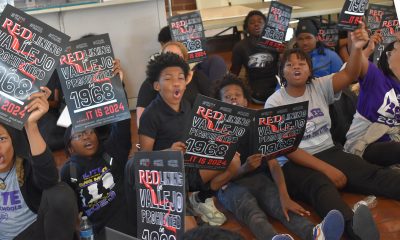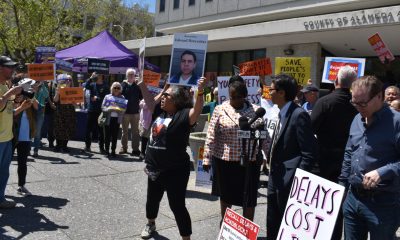California Black Media
Bullying in California: In Some School Districts, Black Students are Targeted by Their Latino Peers
On Feb. 16, 2022, a Black student in the Santa Barbara Unified School District was assaulted by Latino students. His attackers called him the N-word and kneeled on his neck while repeatedly chanting the name “George Floyd.” A district-wide acknowledgment of the hate crime was sent six days later. Despite the psychological trauma this student experienced, the school did little to provide him with mental health support.

By Edward Henderson
California Black Media
On Feb. 16, 2022, a Black student in the Santa Barbara Unified School District was assaulted by Latino students. His attackers called him the N-word and kneeled on his neck while repeatedly chanting the name “George Floyd.” A district-wide acknowledgment of the hate crime was sent six days later.
Despite the psychological trauma this student experienced, the school did little to provide him with mental health support.
Connie Alexander-Boaitey, the president of the Santa Barbara branch of the NAACP, says African Americans are often minimized in her city due to being the smallest demographic group.
Alexander-Boaitey spoke during an Oct. 27 news briefing hosted by Ethnic Media Services on school bullying.
She was joined by Becky L. Monroe, the deputy director of strategic initiatives and external affairs at the California Civil Rights Department; Dashka Slater, an award-winning journalist and author who has written books about child bullying victims; and Mina Fedor, a young Asian American activist who founded the organization AAPI Youth Rising.
Alexander-Boaitey said the hate crimes and incidents affecting children are all connected to “generational pain” for Black Americans. Primarily, there is “a pervasive calling of the N-word by young Latino students,” she said. “It’s every day. It’s weekly.”
She said that a Black family in Santa Barbara now walks their child to school to protect her from bullying classmates, and another has pulled their daughter out of the school system completely, opting for homeschooling.
The Santa Barbara Unified School District commissioned a survey titled “2023 Anti-Blackness and Racial Climate Assessment and Analysis” that proposed a set of recommendations for addressing the problem.
The hate incidents targeting African American children are increasing across California, according to the NAACP. These incidents, often involving physical violence and verbal abuse, are more frequent as Black families relocate to predominantly Latino neighborhoods.
In Santa Barbara, African Americans make up only 2% of the population but account for the most victims of bullying and hate crimes in the area. At 47.5%, Latinos make up the majority of Santa Barbara’s population followed by white people at 43.5%. According to the local NAACP branch, most of the perpetrators of the bullying and hate crimes are Latino children.
Alexander-Boaitey says she believes the hate incidents are rooted in historic racism and connected to a general desire to make Black people invisible — expressed through one racially oppressed group pushing out another in an attempt to get closer to whiteness.
According to Dashka Slater, 3 in 4 Americans of ages 15 to 25 have run into extremist content online. One in four students between the ages of 12 and 18 have seen hateful graffiti in their schools. About 1.3 million students were bullied because of some aspect of their identity during the 2018-2019 school year, and half of those children were targeted because of their race.
“Some forms of bullying are, in fact, acts of hate,” said Monroe. “Some acts of hate are crimes, while others are violations of other civil rights laws. Some may be lawful but incredibly harmful, nonetheless. We must recognize the civil rights issues at the heart of this discussion around bullying.”
Monroe also spoke about the state law requiring schools to provide all students with a safe environment free of harassment.
“Schools have a legal obligation to ensure that students are not denied opportunities, treated differently, discriminated against, or harassed because of their race, color, national origin, gender, gender identity, sexual orientation, religion, or disability,” she said.
Studies have shown that students who perpetuate racially motivated bullying don’t necessarily ascribe to racist ideologies but are simply influenced by outside sources or mirroring behavior from their parents or guardians at home.
Alexander-Boaitey says Black and Latino leaders and residents from the area have not formally met yet to resolve tensions brewing between their communities.
“I know this is where the struggle really is,” she added. “We have to actually sit down and have our own conversations. Has it happened? No, it has not happened … What supports it not happening is the erasure culture that says, no, we don’t really need to talk about that, oh, it was just a single incident.”
The state of California provides resources for victims of hate crimes or incidents. Victims or witnesses can report a hate crime or incident https://stophate.calcivilrights.ca.gov/s/
They can also call 833-8-NO-HATE; (833) 866-4283 Monday-Friday from 9 a.m.-6 p.m. or call 211.
This California Black Media report was supported in whole or in part by funding provided by the State of California, administered by the California State Library.
California Black Media
Cinco De Mayo: Five Interesting Facts You Should Know About the Popular Mexican American Holiday
To explore the historical significance of Cinco De Mayo, we step back to the origins of the commemoration, share how some Mexican American Californians regard it and trace how it has morphed into the celebrations we see today.
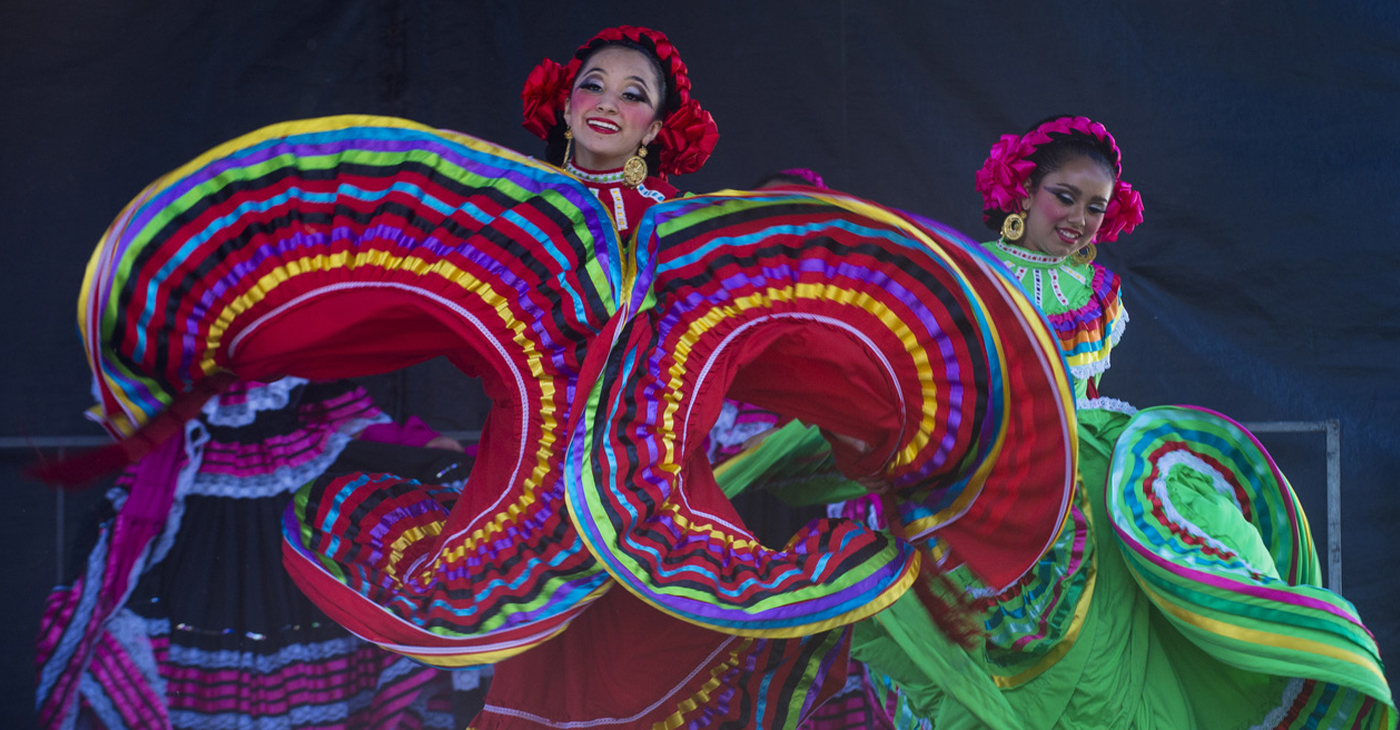
By Edward Henderson, California Black Media
To explore the historical significance of Cinco De Mayo, we step back to the origins of the commemoration, share how some Mexican American Californians regard it and trace how it has morphed into the celebrations we see today.
Celebrations in the United States began in 1862 in Columbia, California, a small town located in the foothills of the Sierra Nevada in Tolumne County, according to that town’s website.
Today, millions of Americans celebrate Cinco De Mayo annually with 120 official celebrations organized across the United States.
This day has become a cultural point of pride for Mexican Americans and other Latino communities in the United States. It serves as a time to affirm and celebrate their cultures with other Americans of all backgrounds as they highlight their contributions to American history and society.
Joseph Soltero, a Mexican American living in Escondido, shared his perspective on Cinco de Mayo with California Black Media. He learned about Cinco De Mayo from his grandfather and talked about the extent to which his family and San Diego County community celebrate the holiday.
“We knew September 16 was really Mexican Independence Day, but kids in my school would always mistake Cinco De Mayo as our Independence Day. [Cinco De Mayo] is not really even a Mexican holiday,” said Soltero. “It’s something people do to have an excuse to buy drinks, have fun and spend a little money at taco shops.”
Like Soltero, many Mexican Americans (and other Latino Californians) do not take the support and solidarity they receive from people of other races on Cinco De Mayo for granted. They also appreciate when people take the time to learn about the cultural significance of the day and avoid some of the cultural tropes that can easily whisper undertones of racism.
To help raise your awareness about the origins and cultural significance of the day, here are 5 little known facts about Cinco De Mayo:
- Cinco De Mayo is not Mexican Independence Day. It is the anniversary of the Battle of Puebla. This military victory on May 5, 1862, over the French forces of Napoleon III was hailed as a symbol for Mexican resistance to foreign influence.
- The holiday was not given much historical significance outside of Puebla, and it has not been celebrated on a large scale in Mexico. However, during the Civil War, Mexican Americans in California, Oregon and Nevada who supported the Union drew inspiration from the victory over the French-backed Confederate forces.
- The Chicano civil rights movement in the 1940s gave a new energy to celebration of the holiday in the United Sates as a symbol of national pride.
- In the 1980s and 1990s, beer companies’ marketing strategies targeted Mexican Americans by encouraging them to celebrate their heritage – and Cinco De Mayo –with Coronas, Bud Light, and Dos Equis. This created the perceived connection between Cinco De Mayo, alcohol, and merrymaking.
- Los Angeles hosts the largest Cinco De Mayo celebration in the country.
As we join Mexican American Californians to celebrate Cinco De Mayo next week, let’s deepen our cultural understanding.
Let’s use this occasion to commit to learning more about our neighbors, colleagues and friends of other races and ethnicities.
This resource is supported in whole or in part by funding provided by the State of California, administered by the California State Library in partnership with the California Department of Social Services and the California Commission on Asian and Pacific Islander American Affairs as part of the Stop the Hate program. To report a hate incident or hate crime and get support, go to CA vs Hate.
Antonio Ray Harvey
Working Group: More Entry-Level Homes Could Help Solve Housing Crisis
The Community Housing Working Group hosted a briefing on April 23 at Cafeteria 15L in Sacramento. Discussions focused on how the housing crisis in California affects Black and Brown communities and explored ways to provide low-income families and individuals with affordable housing.
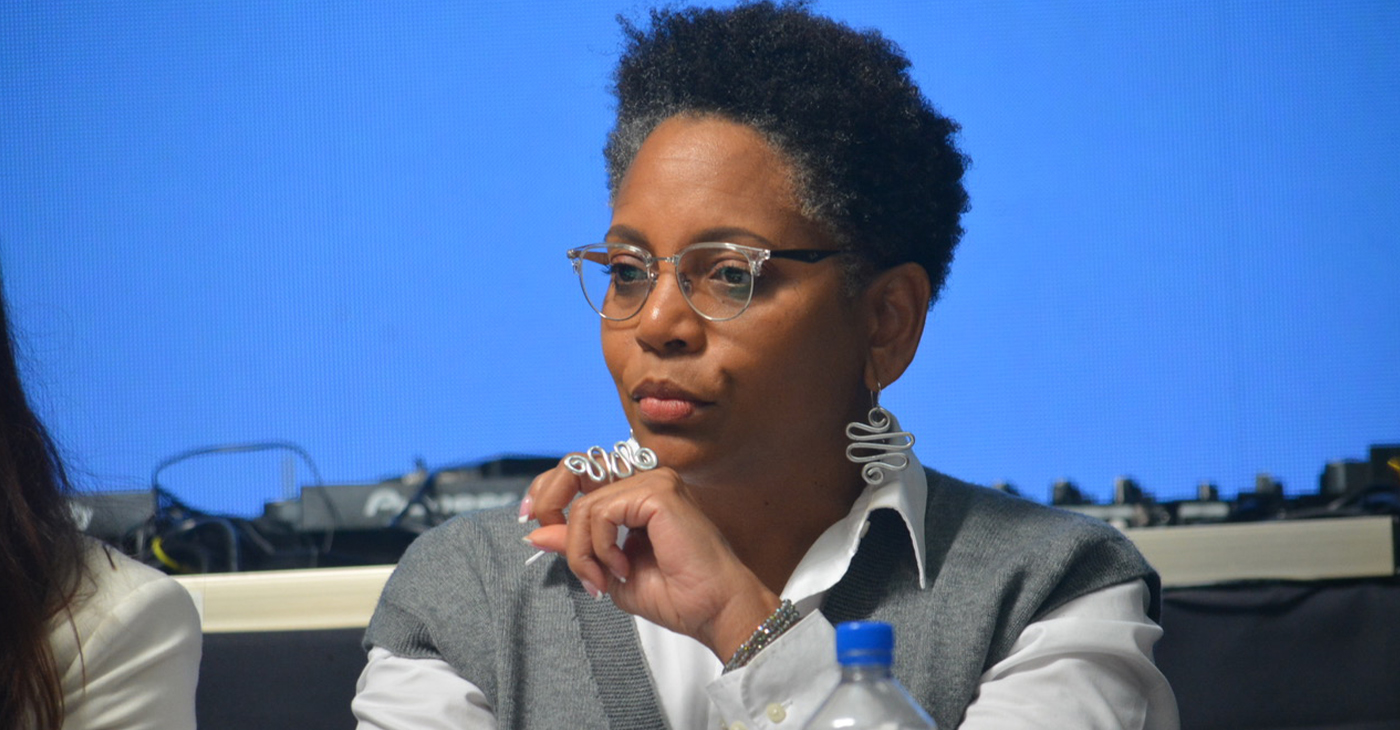
By Antonio Ray Harvey, California Black Media
The Community Housing Working Group hosted a briefing on April 23 at Cafeteria 15L in Sacramento. Discussions focused on how the housing crisis in California affects Black and Brown communities and explored ways to provide low-income families and individuals with affordable housing.
Tia Boatman Patterson, CEO and President of the California Communities Reinvestment Corporation, said “entry-level housing” is not available as it was in the past, adding that affordable units were a major point of entry into homeownership for many families in the Black community.
“My mother bought her first house when I was in junior high. It was an 850-square foot, two-bedroom and one-bathroom house in 1978. That house cost $30,000,” Boatman-Patterson said.
“A woman working part-time at JCPenney was able to afford that house. We don’t build these types of housing now. We do not build entry-level homeownership,” she added.
The Community Housing Working Group is a collection of diverse community organizations from across California working together to address housing challenges in their communities. The organization believes that solving the affordable housing crisis will require creating enough smaller, lower-cost, multi-family homes located near jobs, transit, and good schools.
The briefing included a panel discussion titled, “Exclusionary Zoning: A Look Back and a Path Forward.” Boatman-Patterson participated in that session along with Henry “Hank” Levy, Treasurer-Tax Collector for Alameda County, and Noerena Limón, consultant, Unidos U.S., and Board Member of California Housing Finance Agency.
Boatman-Patterson, a former Associate Director for Housing, Treasury and Commerce in the Office of Management and Budget for the Biden Administration, started her presentation by highlighting how exclusionary single-family zoning is contributing to continued segregation of California communities.
She said that single-family zoning originated in the Bay Area city of Berkeley in 1916.
“By creating single-family zoning and having fenced-off communities, you were able to exclude the ‘others,’” Boatman-Patterson said. “It really was a method to exclude — what they called ‘economic segregation’ — but that was a guise for racial segregation. Single-family zoning, along with redlining, became a systemic approach to exclude based on affordability.”
Title VIII of the federal Civil Rights Act of 1968 — commonly known as the Fair Housing Act of 1968 – is the U.S. federal legislation that protects individuals and families from discrimination in the sale, rental, and financing of housing. It was passed to open the doors to affordable housing.
In 1968, 65.9% of White families were homeowners, a rate that was 25% higher than the 41.1% of Black families that owned their homes, according to National Low-Income Housing Coalition. Today, those figures have hardly changed in the Black community, although White homeownership has increased five percentage points to 71.1%.
Boatman Patterson said the rate has not changed in Black and Brown communities because financing for affordable entry-level homes is almost nonexistent. The homeownership disparities contribute to the disturbing racial wealth gap in the nation, according to the National Low-Income Housing Coalition’s October 2018 report.
“We really must align the financing with the actual building of units, which we haven’t necessarily done. Because of this misalignment, I think we continue to see problems,” Boatman-Patterson said.
California Black Media
State Ed Chief Tony Thurmond Pushes Bill to Train Educators
State Superintendent of Public Instruction (SSPI) Tony Thurmond is advocating for comprehensive training for teachers in reading and math, emphasizing the urgent need to improve student academic outcomes across California. On April 24, during testimony in the Senate Education Committee, Thurmond backed Senate Bill (SB)1115, which aims to provide evidence-backed educator training. The committee passed the bill with a 7-0 vote.
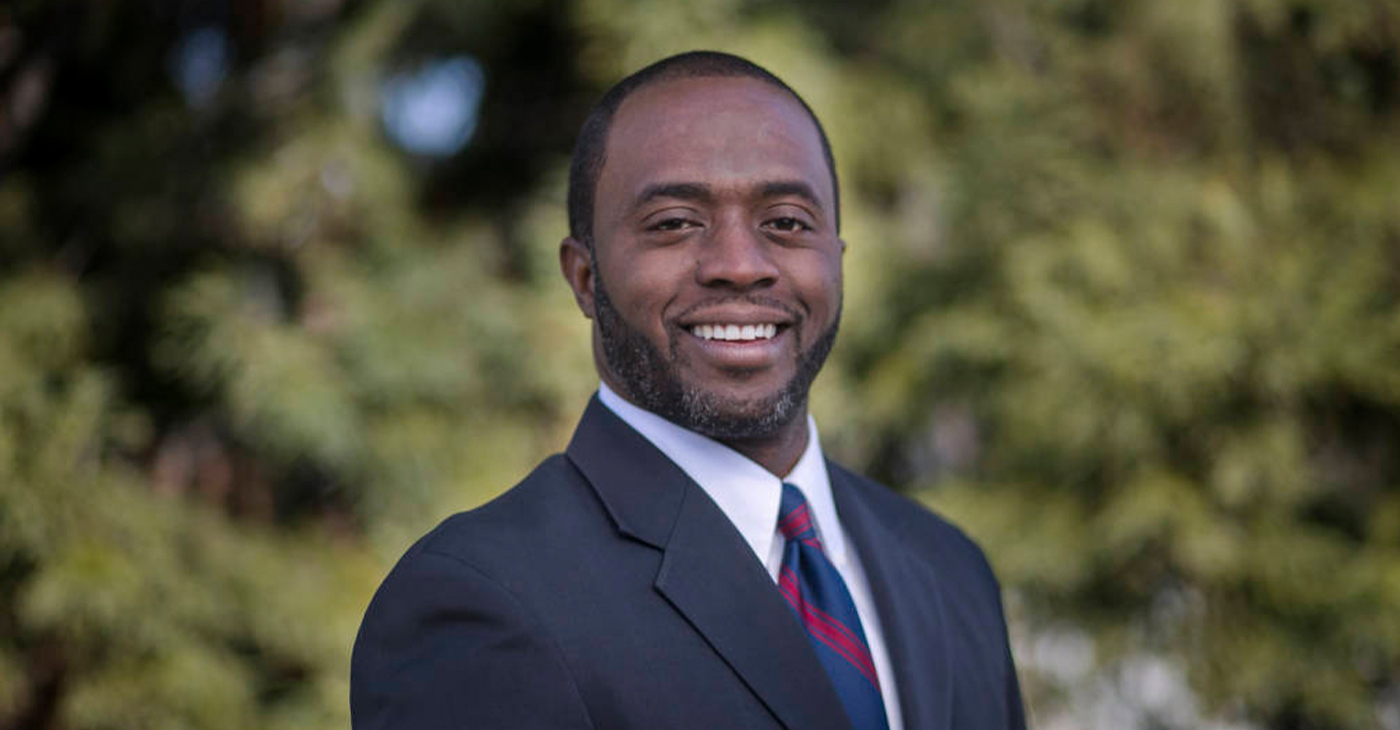
By California Black Media
State Superintendent of Public Instruction (SSPI) Tony Thurmond is advocating for comprehensive training for teachers in reading and math, emphasizing the urgent need to improve student academic outcomes across California.
On April 24, during testimony in the Senate Education Committee, Thurmond backed Senate Bill (SB)1115, which aims to provide evidence-backed educator training. The committee passed the bill with a 7-0 vote.
Thurmond pointed out to the committee that existing funding for educator training in literacy and math only covers about one-third of California’s educator workforce. SB 1115, Thurmond said, would fund the remaining two-thirds.
“This is an issue of moral clarity,” according to Thurmond. “In the fifth-largest economy in the world, and in an age when we have access to substantial brain science about how students learn, it should be unacceptable to train only some educators in the best strategies to teach essential skills.”
SB 1115 incorporates multiple research-backed methods, including phonics, and it aligns with the California ELA/ELD Framework, which encourages biliteracy and multilingualism.
Thurmond emphasized the moral imperative behind the push for enhanced training by noting that 70% of incarcerated adults struggle with reading or are illiterate.
“Every child should feel supported as they learn to read and every teacher should feel confident in their ability to support students’ foundational literacy,” Thurmond said. “SB 1115 is about ensuring that all children have the opportunity to read by third grade, and that all children have a shot at the life-changing outcomes that come from early literacy.”
The next step for SB 1115 is a hearing in the Senate Appropriations Committee on May 6.
-

 Community3 weeks ago
Community3 weeks agoFinancial Assistance Bill for Descendants of Enslaved Persons to Help Them Purchase, Own, or Maintain a Home
-

 City Government5 days ago
City Government5 days agoCourt Throws Out Law That Allowed Californians to Build Duplexes, Triplexes and RDUs on Their Properties
-

 Business3 weeks ago
Business3 weeks agoV.P. Kamala Harris: Americans With Criminal Records Will Soon Be Eligible for SBA Loans
-

 Activism2 weeks ago
Activism2 weeks agoOakland Post: Week of April 24 – 30, 2024
-

 Activism4 weeks ago
Activism4 weeks agoOakland Post: Week of April 10 – 16, 2024
-

 Community3 weeks ago
Community3 weeks agoAG Bonta Says Oakland School Leaders Should Comply with State Laws to Avoid ‘Disparate Harm’ When Closing or Merging Schools
-

 Community3 weeks ago
Community3 weeks agoRichmond Nonprofit Helps Ex-Felons Get Back on Their Feet
-

 Community3 weeks ago
Community3 weeks agoOakland WNBA Player to be Inducted Into Hall of Fame



